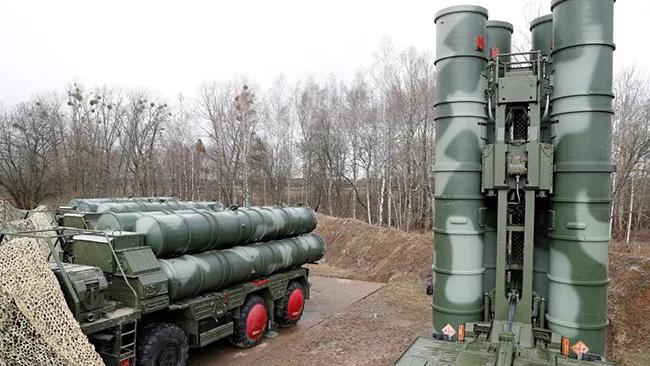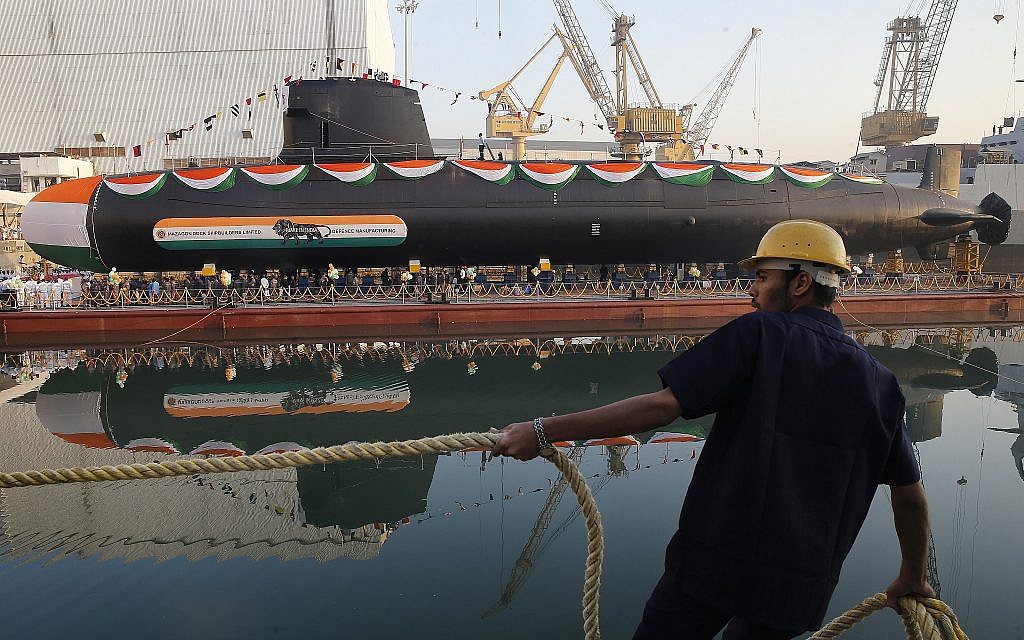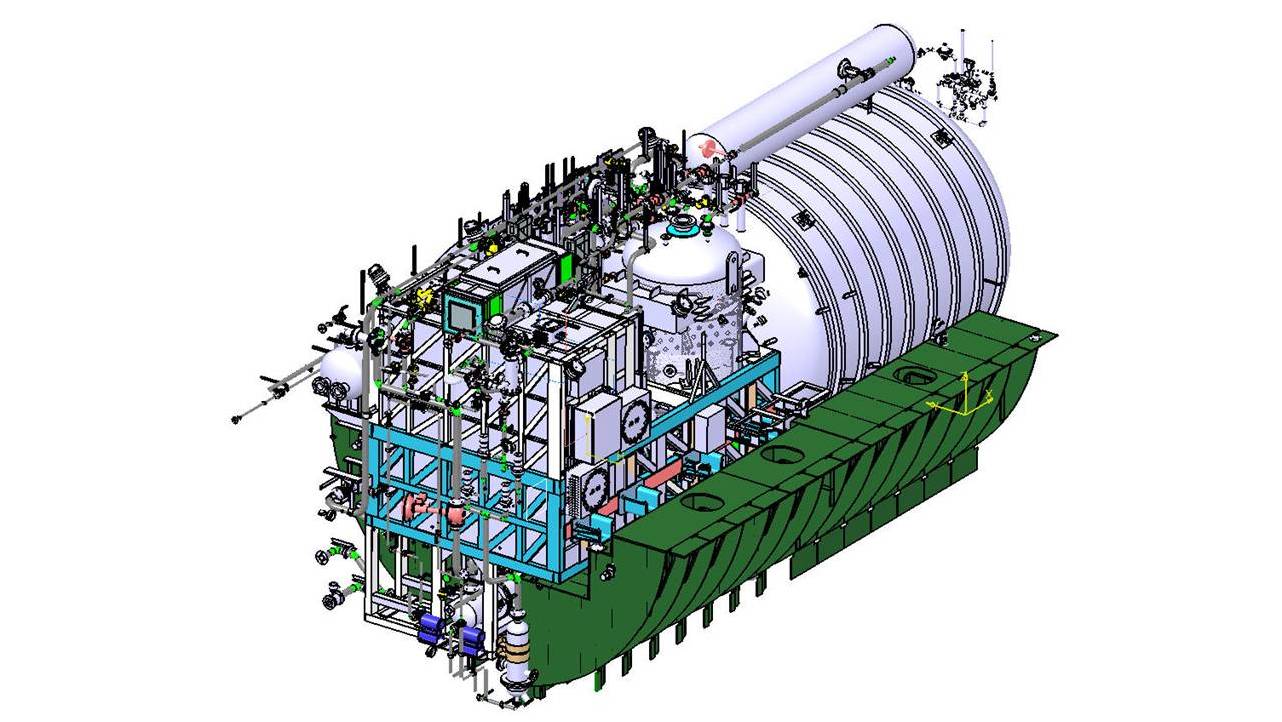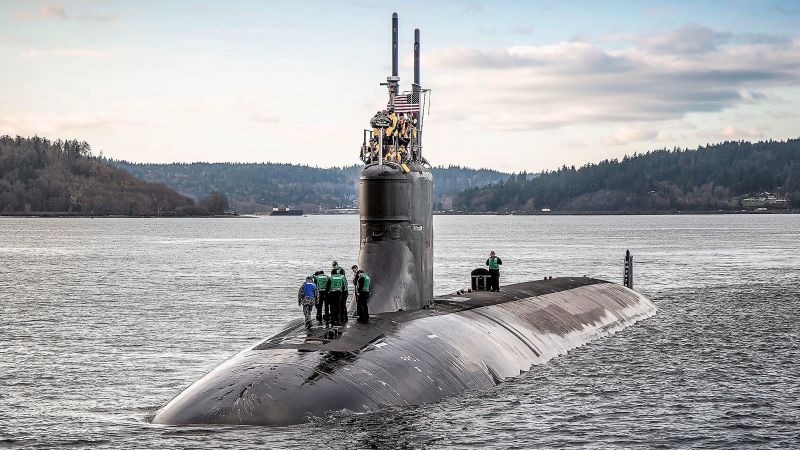Your noisy Chinese submarines will be hunted down by our P8i poseidon and MH60R

Defence Research and Development Organisation (DRDO) has achieved an important milestone in the development of air independent propulsion (AIP) system.

www.naval-technology.com
Indian submarines are absolutely insignificant compared to the hunting and tracking of USA submarines. Unless you think Indian submarines are much much better and more potent than USA submarines.
If so, do tell us all.
And China got movable underwater mountain to position where USA submarine Connecticut found to her horror and bang right into. And USA submarines all remembered to close their hatches before diving unlike India.
Some submariners call the USS Connecticut the luxury sports car of submarines. It's a $3 billion piece of American military hardware that's fast and outfitted with the latest electronic gadgetry only available when price is not a consideration.

edition.cnn.com
The Chinese military authorizes the disclosure of the truth about the accident of the Seawolf class nuclear submarine on the USS Connecticut. 16 November 2021 How the Chinese People’s Liberation Army hunted and sunk the (state of the art) USS Connecticut Seawolf-class attack nuclear submarine...
defence.pk
What China can do to hunt and know where the USA submarines hiding.
You think Indian subs can hide better than USA submarines? With hatches closed?
If USA subs cannot hide from the hundreds of underwater sonar buoys sending information back to super computers to know their directions and speed, Indian subs can hide better than USA subs?
AS SAID, YOU BETTER EDUCATE YOURSELF MUCH MUCH MORE BEFORE YOU EVEN THINK OF WRITING AND EXPOSING TO THE READERS HERE HOW LAUGHABLE YOU REALLY ARE
China sonar supposed to listen to fish and whales. .
You heard of the Great Wall of China.
Another Great Wall China build will be the Underwater Great Wall of China.
https://www.forbes.com/sites/hisutt...al-waters-of-south-china-sea/?sh=3b72e5cb74f3
China Builds Surveillance Network In South China Sea
And what about using lasers and magnets?
Key Point: Should the U.S. Navy be concerned? Are the days of truly stealth subs over? China is making great efforts to detect U.S. submarines. Scientists at a Chinese research institute say they developed an airborne laser that might eventually detect hostile subs even at great depths...

nationalinterest.org
China Is Using Lasers And Magnets To Reveal Enemy Submarines
Bad news for the U.S. Navy.
by Michael Peck
Key Point: Should the U.S. Navy be concerned? Are the days of truly stealth subs over?
China is making great efforts to detect U.S. submarines.
Scientists at a Chinese research institute say they developed an airborne laser that might eventually detect hostile subs even at great depths.
Meanwhile, scientists at another institute also claim to have developed a magnetic detection device that might spot subs.
Researchers at the Shanghai Institute of Optics and Fine Mechanics say they have tested lasers that can detect objects more than 160 meters (525 feet) beneath the water, or twice as deep as current equipment.
“The Shanghai team used a beam generated by green and blue lasers,” according to the South China Morning Post. “As light – even laser, a pure, coherent form of light – scatters faster in water than in air, the beam must be very powerful to go deep. Laser devices generate an energized beam of light of a single color, or frequency. Green and blue beams can penetrate water with relative ease.
“Chen’s team also developed a highly sensitive detector that can pick up a single photon reflected from a target, allowing the device to detect bright objects close to the surface as well as targets hidden in the deep.”
A team at the Wuhan Institute of Physics and Mathematics say they have devised a magnetic detection sensor that can fit into a capsule the size of a bean. “The device can pick up signals as weak as 20 femtotesla, or about one-fifth the strength of the magnetic field generated by a human brain,” explained the South China Morning Post.
“Although other devices known as magnetic anomaly detectors are much more sensitive, they are bulkier and can only be mounted on planes or helicopters,” the Post added. “Magnetic anomaly detectors used in anti-submarine warfare must operate at temperatures near absolute zero and require lasers, power supplies and gas chambers to achieve high sensitivity.”
In 2018, Chinese scientists said they were developing a laser-equipped satellite that could detect submarines. The idea is to use laser beams of various colors that can detect disturbances in the water caused by a moving submarine.
The question is what will make these devices successful when previous efforts have fizzled. For example, in 2010, DARPA's Deep Sea Operations program sought to develop blue-light lasers for undersea communications and hunting subs. The problem is that orbital laser beams can be affected by clouds, murky water and fish, as well as being scattered in the water.
The new blue-green lasers devised by the Shanghai team reportedly have been tested at lower altitudes, from aircraft flying between 1,500 and 3,000 feet. But aircraft-mounted lasers tend to be low-powered, so it remains to be seen whether the new lasers will be successful in locating deep-diving subs.
As for the Wuhan team’s new magnetic detection sensor, a bean-sized device far smaller than the magnetic anomaly detection (MAD) sensors flown by anti-submarine aircraft would seem to face limitations in power and range. Even some Chinese scientists contacted by the Post were dubious that the magnetic sensor could be useful without further development.
However, such a bite-sized device could be mounted in unmanned aircraft, raising the possibility of swarms of drones hunting subs. Of course, the U.S. is working on its own sub-hunting solutions, including a yacht-sized robot ship that tracks enemy vessels.
====================================================================================================================================================================================================
China’s PLAN To Counter US Navy
In a possible conflict over Taiwan, the 14 SSNs the US currently operates, not all deployed in the region, would have to get closer to the Chinese coast to support their surface fleet and hunt for Chinese submarines. As they get closer to the Chinese coast, the PLAN’s numeric superiority in submarines will be an enormous challenge.
While the PLAN’s submarine fleet will pose a formidable threat to the US Navy, its troubles are far from over. In recent years, China has been investing significant resources in advanced underwater sensors, sonar, and anti-submarine lasers technology to better identify and target US submarines.
China’s nuclear-powered Type 094A Jin-class ballistic missile submarine.
The result is a growing “transparency” in the seas surrounding China. China’s ability to detect American submarines at great distances is improving by the day. China has deployed underwater sensors that allow it to monitor US submarine activity as far as Guam.
Last year, a Chinese
underwater drone was washed off the Indonesian island of Selayar close to Northern Australia.
Anti-submarine mines have also received substantial attention from the PLAN and underwater drones to attack American submarines are under development. While these underwater drones seem to be in a developmental stage, the fact that China now has one of the most advanced drone industries in the world should worry the US.
Some analysts have gone as far as predicting that in the next two decades, anti-submarine warfare will be so advanced as to make the
submarine redundant. While this remains to be seen, it is certain that new technologies are making submarine operations far more dangerous.
A Chinese Navy submarine. (via Twitter)
With their limitless range, Australia’s planned 8 SSNs could reach the waters around Taiwan fast and substantially reinforce American submarine forces. Once they reach their objective, it remains to be seen how useful they will be. The PLAN doesn’t seem to have any desire to fight a midway-type battle in the high seas.
China plans to fight the US and its allies closer to its shore where it has deployed thousands of missiles, drones, hundreds of modern fighters, advanced air defense systems, and where the waters are becoming “transparently” deadly by the day.
















